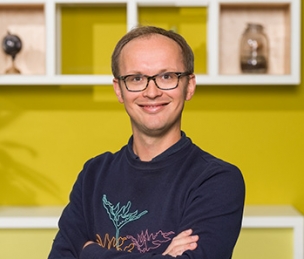Displaying 1 - 5 of 5
-
Dingemanse, M., & Floyd, S. (2014). Conversation across cultures. In N. J. Enfield, P. Kockelman, & J. Sidnell (
Eds. ), The Cambridge handbook of linguistic anthropology (pp. 447-480). Cambridge: Cambridge University Press. -
Dingemanse, M., Blythe, J., & Dirksmeyer, T. (2014). Formats for other-initiation of repair across languages: An exercise in pragmatic typology. Studies in Language, 38, 5-43. doi:10.1075/sl.38.1.01din.
Abstract
In conversation, people have to deal with problems of speaking, hearing, and understanding. We report on a cross-linguistic investigation of the conversational structure of other-initiated repair (also known as collaborative repair, feedback, requests for clarification, or grounding sequences). We take stock of formats for initiating repair across languages (comparable to English huh?, who?, y’mean X?, etc.) and find that different languages make available a wide but remarkably similar range of linguistic resources for this function. We exploit the patterned variation as evidence for several underlying concerns addressed by repair initiation: characterising trouble, managing responsibility, and handling knowledge. The concerns do not always point in the same direction and thus provide participants in interaction with alternative principles for selecting one format over possible others. By comparing conversational structures across languages, this paper contributes to pragmatic typology: the typology of systems of language use and the principles that shape them -
Dingemanse, M. (2014). Making new ideophones in Siwu: Creative depiction in conversation. Pragmatics and Society, 5(3), 384-405. doi:10.1075/ps.5.3.04din.
Abstract
Ideophones are found in many of the world’s languages. Though they are a major word class on a par with nouns and verbs, their origins are ill-understood, and the question of ideophone creation has been a source of controversy. This paper studies ideophone creation in naturally occurring speech. New, unconventionalised ideophones are identified using native speaker judgements, and are studied in context to understand the rules and regularities underlying their production and interpretation. People produce and interpret new ideophones with the help of the semiotic infrastructure that underlies the use of existing ideophones: foregrounding frames certain stretches of speech as depictive enactments of sensory imagery, and various types of iconicity link forms and meanings. As with any creative use of linguistic resources, context and common ground also play an important role in supporting rapid ‘good enough’ interpretations of new material. The making of new ideophones is a special case of a more general phenomenon of creative depiction: the art of presenting verbal material in such a way that the interlocutor recognises and interprets it as a depiction. -
Dingemanse, M., & Enfield, N. J. (2014). Let's talk: Universal social rules underlie languages. Scientific American Mind, 25, 64-69. doi:10.1038/scientificamericanmind0914-64.
Abstract
Recent developments in the science of language signal the emergence of a new paradigm for language study: a social approach to the fundamental questions of what language is like, how much languages really have in common, and why only our species has it. The key to these developments is a new appreciation of the need to study everyday spoken language, with all its complications and ‘imperfections’, in a systematic way. The work reviewed in this article —on turn-taking, timing, and other-initiated repair in languages around the world— has important implications for our understanding of human sociality and sheds new light on the social shape of language. For the first time in the history of linguistics, we are no longer tied to what can be written down or thought up. Rather, we look at language as a biologist would: as it occurs in nature. -
Dingemanse, M., Verhoef, T., & Roberts, S. G. (2014). The role of iconicity in the cultural evolution of communicative signals. In B. De Boer, & T. Verhoef (
Eds. ), Proceedings of Evolang X, Workshop on Signals, Speech, and Signs (pp. 11-15).

Share this page